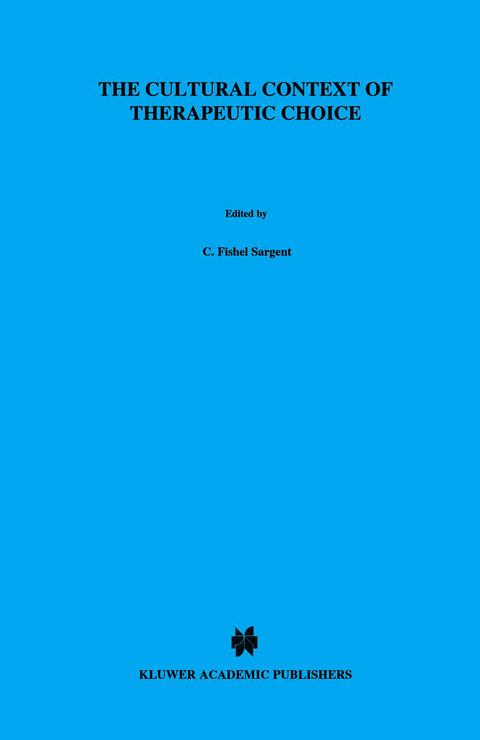
The Cultural Context of Therapeutic Choice
Kluwer Academic Publishers (Verlag)
978-90-277-1344-5 (ISBN)
1: Introduction.- 1.1. The Study.- 1.2. The Setting.- 1.3. Methodology.- 1.4. Theoretical Perspectives on Health Care Decisions.- 2: The Cultural Context of Therapeutic Choice.- 2.1. Bariba Conceptions of the Order of the Universe.- 2.2. Diagnosis and Treatment.- 2.3. Divination.- 2.4. The Use of Substances.- 2.5. Medicines.- 3: Beliefs and Practices Surrounding Reproductive Processes.- 3.1. Menstruation and Clitoridectomy.- 3.2. Conception.- 3.3. Development of Fetus.- 3.4. Contraception.- 3.5. Abortion.- 3.6. Sterility.- 4: Status Among the Bariba: The Roles and Responsibilities of Women.- 4.1. Status in Bariba Society.- 4.2. Position of Women.- 4.3. Economic Subsistence.- 4.4. Political Arena.- 4.5. Domestic Relations.- 4.6. Household Responsibilities.- 5: Sociological and Career Attributes of Midwives.- 5.1. Healers: Midwives and Medicine People.- 5.2. Implications of Role Expectations for Birth Assistance.- 5.3. Recruitment of Matrones and Method of Skill Acquisition.- 5.4. Sources of Medical Knowledge.- 5.5. Matrones Own Reproductive Histories.- 5.6. Age at Unsupervised Delivery.- 5.7. Assistance at Own Child’s Delivery.- 5.8. Remuneration.- 5.9. Comprehensive Care by Matrones.- 5.10. Pregnancy Counseling.- 5.11. Matrone’s Role Variability.- 5.12. Spirit Possession.- 5.13. Inheritance of Spirits.- 5.14. Healing and Sambani.- 5.15. The Matrone Prototype.- 6: The Meaning of Efficacy in Relation to Obstetrical Care Preferences.- 7: Birth Assistance in the Rural Area: Patterns of Delivery Assistance.- 7.1. Delivery Assistance: Patterns of Selection in the Rural Area.- 7.2. Midwifery as a Therapeutic System.- 7.3. Structured Interviews with Matrones.- 8: Client-Practitioner Encounters.- 8.1.1. The Case of Adama.- 8.1.2. The Case of Sako.- 8.1.3. The Case of theProlapsed Cord.- 8.1.4. The Case of the Terrifying Breech 120.- 8.1.5 The Case of Bona.- 8.2. Pain as a Cultural Phenomenon.- 8.3. Pregnancy (by Nicole).- 8.4. Conclusion.- 9: Utilization of National Health Services for Maternity Care in the District of Kouande.- 9.1. Clinic vs. Home Delivery: A Pehunko Sample.- 9.2. Utilization of the Pehunko Dispensary.- 9.3. Pehunko Women at the Kouande Maternity Clinic.- 9.4. The Kouande Maternity Clinic: General Utilization.- 10: Conclusion.- 10.1. Implications of the Bariba Study for the Cross-Cultural Study of Midwifery.- 10.2. The Involvement of Indigenous Midwives in National Health Systems.- 10.3. Training Programs.- Appendices.- Appendix A: Demographic Data.- Appendix B: Female Circumcision Songs.- Notes.
| Erscheint lt. Verlag | 31.3.1982 |
|---|---|
| Reihe/Serie | Culture, Illness and Healing ; 3 |
| Zusatzinfo | XII, 192 p. |
| Verlagsort | Dordrecht |
| Sprache | englisch |
| Maße | 156 x 234 mm |
| Themenwelt | Geisteswissenschaften ► Philosophie ► Logik |
| Medizin / Pharmazie | |
| Naturwissenschaften ► Biologie ► Humanbiologie | |
| Sozialwissenschaften ► Ethnologie | |
| Sozialwissenschaften ► Soziologie | |
| ISBN-10 | 90-277-1344-8 / 9027713448 |
| ISBN-13 | 978-90-277-1344-5 / 9789027713445 |
| Zustand | Neuware |
| Haben Sie eine Frage zum Produkt? |
aus dem Bereich


